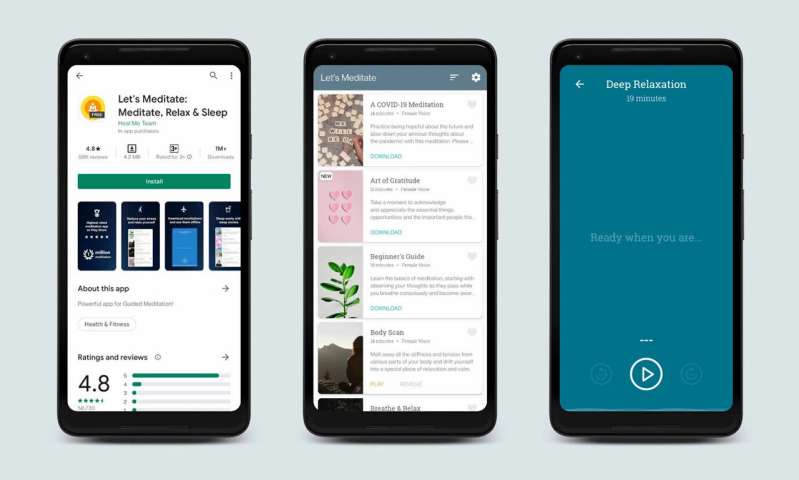How a student’s meditation app boomed with downloads during the COVID-19 pandemic

When Sagar Vasnani explored the meditation apps that were available five years ago, he noticed something about them that missed the mark. Many of the apps charged for the majority of their content, with resources organized in an overly complicated way.
With an interest in app development and a passion for meditation and wellness, Vasnani embarked on a journey to create his own meditation app: Let’s Meditate.
“I had attended an intensive energy healing workshop, many years ago, that introduced me to meditation,” said Vasnani, a second-year master’s student in human-computer interaction at the Luddy School of Informatics, Computing and Engineering at IU Bloomington. “That experience had a lasting impact on me. Later, I went to a 10-day-long meditation retreat where we were to quietly meditate for 10 hours each day. Escapades like these developed my passion for meditation and nudged me to develop wellness resources that people around the world could benefit from.”
Vasnani wanted to make sure his app was user friendly and easy to understand. Let’s Meditate offers a straight-forward approach to meditation and wellness, with various guided meditation tracks for anxiety, healing and sleep, among others. It is a donation-based platform, meaning users can support the app monetarily if they’d like, but payment is not required to use it. There are also no advertisements or sign-ups to distract from the meditation experience.
More than 20,000 people use the app on a daily basis, but that number wasn’t reached right away.
“After releasing the app in 2015, the total number of downloads after 12 full months was a little over 500, a pitifully low number,” Vasnani said. “However, in hindsight, this was a blessing in disguise. The limited exposure for such a long time allowed me to test various iterations of the app and simplify its user experience significantly. When the app finally started getting enough traction, its polished user experience and the robust architecture enabled the app to go viral.”
The app now has 1.7 million lifetime downloads and is the top meditation app on the Google Play Store.
“I have spent zero marketing dollars to get to this point,” Vasnani said. “This organic reach is a result of a strong and committed user base engaged in willingly sharing the app to their friends and family through the word of mouth.”
Let’s Meditate also saw an increase in users at the start of the COVID-19 pandemic, which Vasnani said was the result of the mandatory lockdowns around the world. The number of users in the app increased exponentially as people looked for ways to de-stress in their home environments.
“After the lockdowns started, I took the opportunity to reach out to some Let’s Meditate users from over a dozen countries to interview them,” Vasnani said. “Through speaking to them, I was able to understand how people were dealing with the pandemic stress and learn how Let’s Meditate could be further improved to accommodate the current times.”
Since the time Vasnani joined the Luddy School’s Shoebox community this year, he has relied on resources like lawyers and successful serial entrepreneurs for advice. The Shoebox is an innovation program for Luddy School students as well as the broader IU community that provides resources, mentoring and scholarships to aspiring entrepreneurs. As the only person working on Let’s Meditate, Vasnani said he found it valuable to rely on Shoebox resources whenever necessary.
Vasnani said he plans to become a serial entrepreneur himself, and to continue building wellness products and learning something new each time that he can apply to his next venture. He attributes his app’s success to the authenticity in his intentions as he focused on providing the best value to the user and avoided pushing for profits.
His advice to other app developers?
Source: Read Full Article
